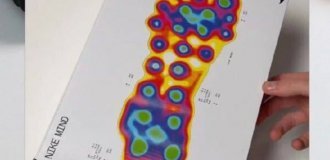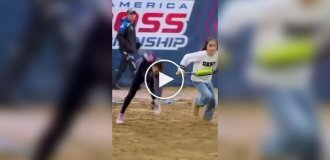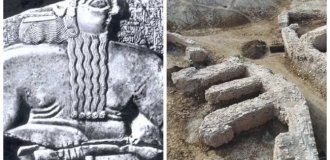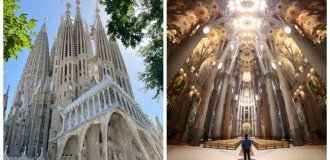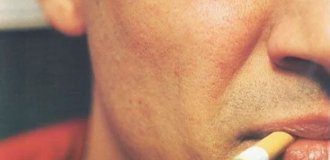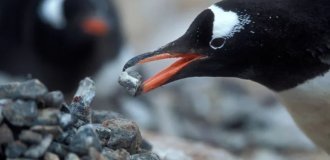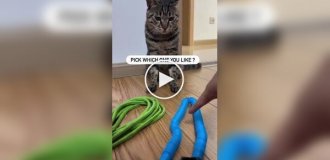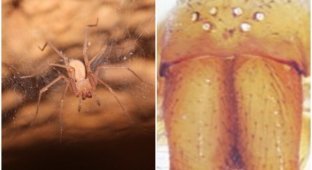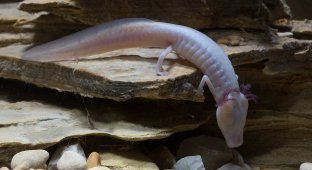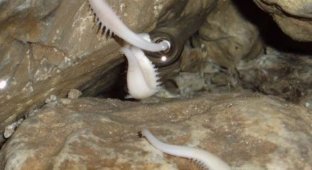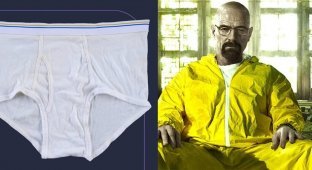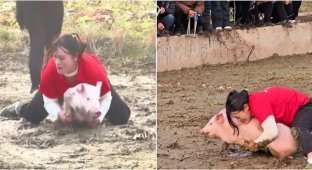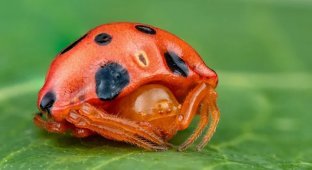Proteus: this “ghost” of deep caves lives for a century and may not eat for 10 years (9 photos)
What kind of animal are compared to connoisseurs of home comfort who crawl out into the street only to buy groceries? That's right, with an owl. But this is a critical mistake, because there is a more suitable animal. Proteus stayed so long inside the four stone walls that he lost his sight and completely faded! 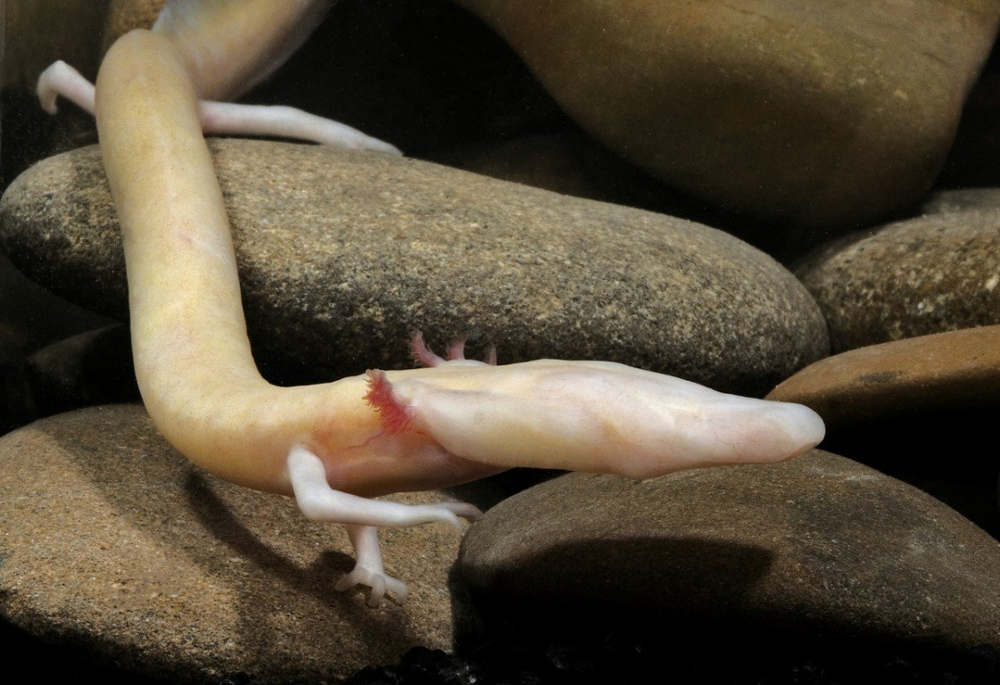
Oh no, the milk sausage has been out of the fridge for too long! She has found life!
What is this strange sausage with fringe and legs? This is a salamander. That is, a tailed amphibian. But unlike its other relatives, Proteus decided to forever abandon fresh air and sunlight. And this is what came out of it. 
- Son, go outside for a walk. Otherwise he’s all pale, like a toadstool! - Well maaaah!
The bleached amphibian does not crawl out of the flooded caves of Eastern Europe. Proteus could be understood if it were comfortable in the caves, but it’s not like that there. There is no light, it’s cold (8-10 degrees all year round), and you won’t even be able to get enough food. But difficulties do not frighten the eccentric salamander; on the contrary, they strengthen them. 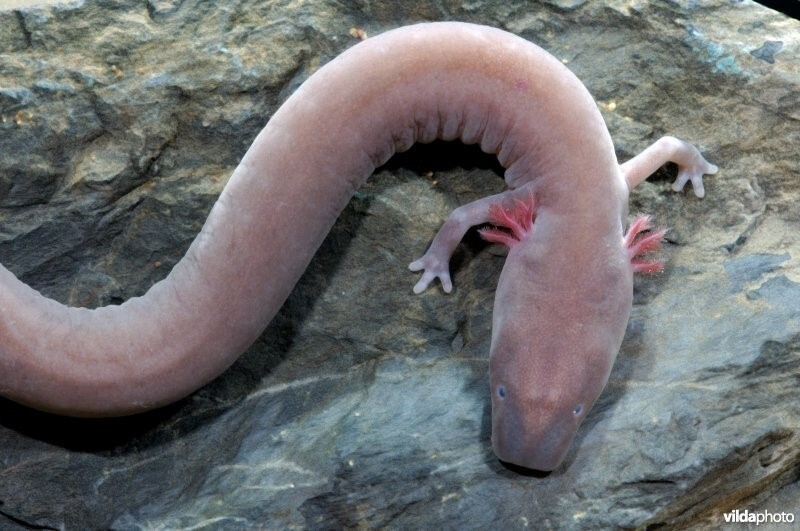
Proteas have a slightly darker version in which even the eyes are visible. Previously, scientists considered it a separate species, but it turned out that it is just a subspecies that lives in the only cave on the planet!
To navigate in the dark, the animal exchanged vision for improved other senses: its eyes are overgrown with skin and can only distinguish between light levels. But the amphibian’s sense of smell, hearing and sensitivity to electric fields are much sharper. 
I don't see that you're afraid of me. I can smell it.
In addition to the eyes, Proteus also abandoned its terrestrial lifestyle, for which it paid for the presence of small, almost useless stumps. For the swim, the animal chose a swimming technique for legless people - wag your body like an eel and swim forward. 
I crawl out of my room into the kitchen after a quarrel with my mother.
But Proteus doesn’t do that either, because you can productively crush Lezhnsky at the bottom without showing signs of life. Amphibians dislike body movements so much that scientists first conducted research, and then returned 7 years later and found the same proteas in the same places! One individual was lying right on the same cobblestone! 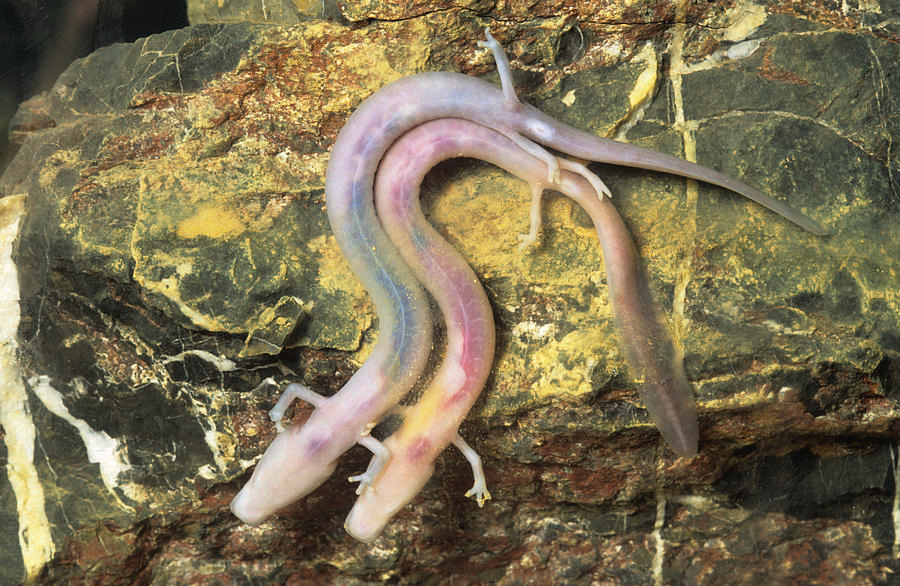
It could be us, but you don't want to lie on a pebble and cuddle with me forever.
Proteas make babies as slowly as they do everything else. Salamanders reach sexual maturity at 15 years of age. And adults lay 35 eggs every 12.5 years. This is someone who doesn’t give a damn about survival at all! 
The Proteus itself is also not quite adult. Physiologically, he remains in the state of a child all his life. Such larvae are called neotenic. Their main difference from ordinary larvae is that they are able to reproduce.
If human energy conservation on the sofa can be explained by laziness, then Protean reclining on stones is a severe necessity. There are practically no other inhabitants in the dark caves. You can have time to throw back your gills from hunger, but still not wait for prey. Therefore, when luck turns to the Proteus, and it manages to kill an insect, crustacean or other small living creature, it, first of all, tries to save some calories for the future in the form of fat reserves. Who knows when lunch will come around next? 
So, you, with a camera, quickly climb into my mouth! I'll have enough of you for the rest of my life!
The amphibian has perfected this energy-saving combo so much that it can go without eating for up to 10 years! And this is already much more than all the relatives of the Proteas live. Among amphibians, they are truly long-lived: a carcass of 20-30 cm can live for a century. Other amphibians of the same size live only a few years. 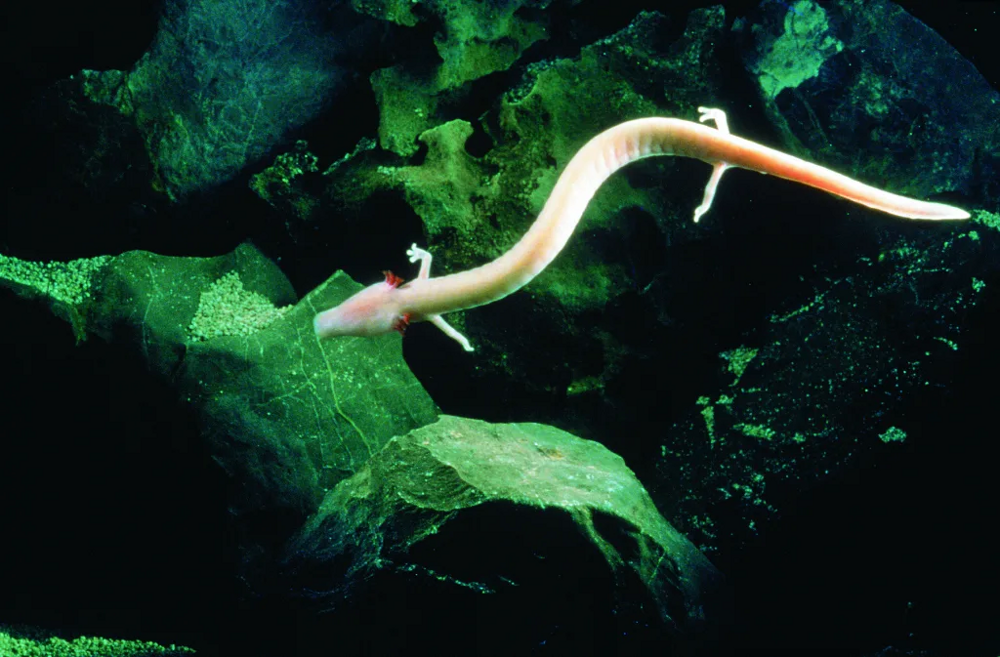
Yes, I look like an alien gut, but I live a long time!
I will disappoint homebodies, the secret of longevity has nothing to do with inactivity. It’s just that the energy stations of cells—mitochondria—work very well in animals. They almost never throw out a special form of actactive oxygen, which damages DNA, proteins and other compounds, which leads to aging. As the Proteans would say: “the absence of active oxygen is life!”
